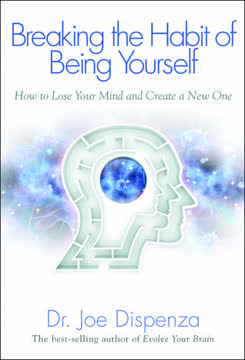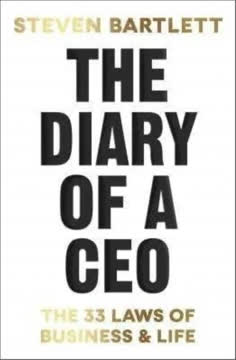重点摘要
1. 利用心灵的力量创造积极变化
对任何事情感到好或坏只有两种方式:要么记住发生过的好事或坏事,要么想象可能发生的好事或坏事。
身心连接。 我们的思想以内部图像和声音的形式直接影响我们的情感和行为。通过控制这些心理过程,我们可以改变情绪状态,*终改变生活结果。
暗示的力量。 人类的心灵高度易受暗示,响应外部和内部的提示。通过有意识地引导自我对话和心理图像,我们可以重新编程潜意识,获得成功和幸福。
神经可塑性。 大脑形成新神经通路的能力意味着我们可以通过持续练习积极的心理技巧来改变根深蒂固的思维模式和行为。
2. 通过心理技巧减轻压力并创造平静
渐进性放松... 通过多次练习这种技巧,你将掌握自己和生活中的一个重要部分。
渐进性放松。 这种技巧涉及系统地紧张和放松不同的肌肉群,结合可视化,达到深度的身心放松状态。
Havening技巧。 这种心理感官方法使用特定的触摸模式、眼球运动和可视化来快速减少压力和负面情绪。研究表明它可以:
- 减少体内的压力化学物质
- 产生放松和平静的状态
- 改变大脑中的神经通路
情感重新校准。 Apex技巧帮助将挑战性的情感重新整合到我们的整体情感智力中,使我们能够保持这些情感的保护功能而不被它们压倒。
3. 通过改变内部对话和姿势提升自信
自信是“在自己的皮肤里感到舒适——真实和自然。”
内部对话。 我们的自我对话显著影响我们的自信水平。通过有意识地改变内部声音的语调、音量和内容,使其更加积极和支持,我们可以提升自信心。
力量姿势。 Amy Cuddy的研究表明,仅仅采用某些身体姿势两分钟就可以:
- 增强力量和自信的感觉
- 降低皮质醇(压力激素)水平
- 提高睾酮(自信激素)水平
可视化。 想象自己更加自信或从榜样那里借用自信可以帮助重新编程大脑,获得更大的自信。这种技巧利用了大脑无法区分生动想象的经历和真实经历的特点。
4. 通过灵活性和创造性解决问题建立韧性
韧性实际上是创造性思维与坚持的结合。
灵活性。 必要多样性法则指出,行为灵活性多的人将在任何系统中拥有多的控制权。发展多种应对挑战的方法可以增加韧性。
创造性解决问题。 像问题解决问题这样的技巧有助于转变视角并产生新解决方案:
- 识别问题中的积极因素
- 澄清期望的结果
- 考虑要采取或停止的行动
- 在必要任务中找到动力
- 立即采取行动
榜样视角。 想象一个成功的问题解决者如何应对你的挑战,可以提供新的见解和策略。
5. 通过与核心价值观对齐的目标实现真实的动力
除非幸福是我们生活的背景,否则生活将永远是艰难的攀登。
核心价值观识别。 发现真正对你重要的东西,为设定有意义的目标和找到持久的幸福提供基础。这个过程包括:
- 识别生活中*重要的东西
- 问“为什么”以揭示潜在的价值观
- 区分表面欲望和更深层次的动机
价值驱动的生活。 将日常行动与核心价值观对齐,创造一种目的感和持续的动力,而不是追逐短暂的快乐或外部验证。
平衡和整体成功。 在设定目标时考虑多个生活领域(健康、关系、事业、精神),确保个人成长和满足的全面方法。
6. 通过解决内部冲突克服自我破坏
当某人渴望实现目标,但又害怕失败时,就会产生内部冲突。
内部冲突识别。 自我破坏通常源于具有不同积极意图的内部“部分”之间的冲突。识别这些部分是解决的*步。
部分整合。 “轻松停止自我破坏”技巧包括:
- 识别冲突的信念或立场
- 认识到每个部分背后的积极意图
- 在各部分之间找到共同点
- 整合各部分以实现一致行动
一致行动。 当内部冲突得到解决时,之前用于内部斗争的能量可以重新定向,朝着实现目标和发挥潜力迈进。
7. 通过可视化和决策创造引人入胜的未来
“这个世界上*伟大的事情不是我们站在哪里,而是我们朝哪个方向前进。” - 歌德
未来可视化。 “现在创造你的未来”技巧包括:
- 想象一年后的成功未来
- 创建3个月间隔的里程碑图像
- 将当前行动与未来结果联系起来
计算风险。 在1-10的范围内评估决策的利弊,有助于做出更明智的选择,避免鲁莽的风险。
方向优于固定目标。 拥有明确的生活方向,以价值观为指导和灵活的目标为基础,允许在保持目的感和进步的同时进行适应。
8. 通过积极思考和感恩增加运气
相信自己幸运的人比相信自己不幸运的人更幸运。
运气心态。 科学研究表明,运气受我们的信念和感知影响。培养“幸运”的心态可以增加积极的机会和结果。
运气放大技巧。 这种可视化练习包括:
- 回忆你感到幸运或事情顺利的时刻
- 放大相关的积极情感和感觉
- 将这种“运气能量”传播到生活的各个领域
每日感恩练习。 保持感恩日记:
- 强化生活中的积极方面
- 训练大脑关注和寻找好的经历
- 提升基线情绪和整体生活满意度
- 在挑战时期提供积极的来源
最后更新日期:
FAQ
What's "Positivity: Confidence, Resilience, Motivation" about?
- Comprehensive System: The book by Paul McKenna is a guide to developing positivity through confidence, resilience, and motivation. It combines reading with audio sessions for a holistic approach.
- Transformative Techniques: It offers psychological techniques and guided hypnosis to help readers achieve lasting change by tapping into their unconscious mind.
- Structured Approach: The content is divided into sections focusing on reducing stress, building confidence, enhancing resilience, and boosting motivation.
- Practical Exercises: The book includes exercises and thought experiments designed to help readers reframe their mindset and improve their emotional intelligence.
Why should I read "Positivity: Confidence, Resilience, Motivation"?
- Life-Changing Potential: The book promises to positively change your life by providing tools to enhance your mental and emotional well-being.
- Dual Approach: It combines reading with audio hypnosis sessions, offering a unique, immersive experience that mimics personal coaching.
- Proven Techniques: The methods are based on years of research and practice, tested on thousands of people, ensuring their effectiveness.
- Holistic Benefits: It addresses various aspects of life, from stress reduction to motivation, making it a comprehensive guide for personal development.
What are the key takeaways of "Positivity: Confidence, Resilience, Motivation"?
- Mindset Shift: The book emphasizes the power of suggestion and how changing your internal dialogue can transform your life.
- Emotional Control: Techniques like the Havening and Apex methods help manage stress and recalibrate emotions.
- Confidence Building: Exercises are provided to boost self-belief and confidence, essential for personal and professional success.
- Goal Setting: It encourages aligning goals with core values to ensure a fulfilling and purpose-driven life.
How does Paul McKenna define "Positivity" in the book?
- Mindset and Behavior: Positivity is described as a mindset and way of behaving that involves confidence, resilience, and motivation.
- Not Constant Happiness: It doesn't mean being happy all the time but having a default setting of positive emotions.
- Emotional Balance: Positivity allows for natural emotional responses to negative events but prevents living in fear or sadness.
- Transformative Power: By embracing positivity, every aspect of life, from work to relationships, can be improved.
What is the "Havening Technique" mentioned in the book?
- Psycho-Sensory Method: Havening is a psycho-sensory technique involving touch, eye movements, and visualization to reduce stress and trauma.
- Rapid Results: It produces quick and significant changes in emotional states by altering brain chemistry and neural pathways.
- Scientific Backing: Developed by Dr. Ronald Ruden, it is used by military and emergency services for its effectiveness.
- Practical Application: The book provides a step-by-step guide to practicing Havening for personal stress management.
How does the book suggest building resilience?
- Flexibility and Adaptability: Resilience is not just about toughness but also about being adaptable and creative in problem-solving.
- Law of Requisite Variety: The book explains that the most flexible person in a system will control it, emphasizing the need for behavioral flexibility.
- Problem-Solving Techniques: It offers questions and exercises to shift perspectives and generate creative solutions to challenges.
- Role Model Strategy: Readers are encouraged to adopt the mindset of successful problem-solvers to enhance their resilience.
What are the best quotes from "Positivity: Confidence, Resilience, Motivation" and what do they mean?
- Albert Einstein Quote: "Everything should be made as simple as possible, but no simpler." This emphasizes the book's approach to simplifying complex psychological techniques for practical use.
- Mark Twain Quote: "I’ve lived through some terrible things in my life – some of which actually happened." This highlights the concept of catastrophizing and the importance of focusing on reality.
- Goethe Quote: "The greatest thing in this world is not so much where we stand as in what direction we are moving." It underscores the importance of having a clear direction and purpose in life.
- Bob Marley Quote: "Some people are so poor all they have is money." This reflects the book's message about the importance of aligning goals with core values for true fulfillment.
How does the book address self-sabotage?
- Internal Conflict Resolution: The book provides a technique to align conflicting parts of the self that may lead to self-sabotage.
- Positive Intentions: It encourages understanding the positive intentions behind conflicting desires to integrate them harmoniously.
- Practical Exercise: A step-by-step method is offered to resolve internal conflicts and focus on unified goals.
- Empowerment: By resolving self-sabotage, readers can move forward with confidence and clarity in their pursuits.
What is the "Negative Thought Fast" and how does it work?
- Mind Rewiring: The Negative Thought Fast is a process to rewire the brain by starving it of negative thoughts.
- Awareness and Action: It involves recognizing negative thoughts, understanding their messages, and taking action to address them.
- Positive Reprogramming: The technique encourages replacing negative imagery with positive outcomes to change emotional responses.
- Habit Formation: By consistently practicing this fast, readers can develop a habit of focusing on positive thoughts and feelings.
How does the book suggest using "Power Poses" for confidence?
- Physiological Influence: Power poses are physical stances that influence mental and emotional states, boosting confidence.
- Scientific Validation: Research by Amy Cuddy shows that power poses can alter hormone levels, increasing confidence and reducing stress.
- Practical Application: The book describes specific poses like "Wonder Woman" and "Winner" to practice before important events.
- Behavioral Impact: Regular use of power poses can lead to more assertive and confident behavior in various situations.
What role do "Core Values" play in goal setting according to the book?
- Foundation for Goals: Core values are the underlying principles that should guide goal setting to ensure alignment with personal fulfillment.
- Clarity and Direction: Identifying core values helps clarify what truly matters, preventing pursuit of goals that don't resonate personally.
- Value-Driven Life: Living in accordance with core values leads to genuine happiness and satisfaction, beyond material achievements.
- Practical Exercise: The book provides a method to identify and prioritize core values before setting goals.
How does the book propose increasing one's luck?
- Mindset Shift: The book suggests that believing in one's luck can actually increase it, supported by scientific research.
- Visualization Technique: A visualization exercise is provided to recall and amplify feelings of luck, spreading this energy to all life areas.
- Positive Reinforcement: By focusing on past lucky experiences, readers can enhance their perception of being lucky.
- Daily Practice: Regular practice of the luck exercise can lead to noticeable improvements in opportunities and outcomes.
评论
《积极心态》获得了大多数正面评价,读者们称赞其实用的练习和音频下载,能够提升自信和动力。许多人认为这本书很有帮助且易于使用,特别是其更新的内容针对后疫情时代的生活。一些人批评它过于表面或重复了麦肯纳之前的作品。读者们重视其简短的篇幅和能够反复使用的技巧。虽然大多数人认为它在改善心态和应对压力方面很有效,但少数怀疑者质疑其深度和科学依据。总体而言,这本书被视为一本快速、易于获取的提升积极心态的指南。
Similar Books










![I CAN MAKE YOU RICH (BOOK AND CD) [Hardcover] Summary](https://images.sobrief.com/social/cover_i-can-make-you-rich_360px_1747144112.jpg)





